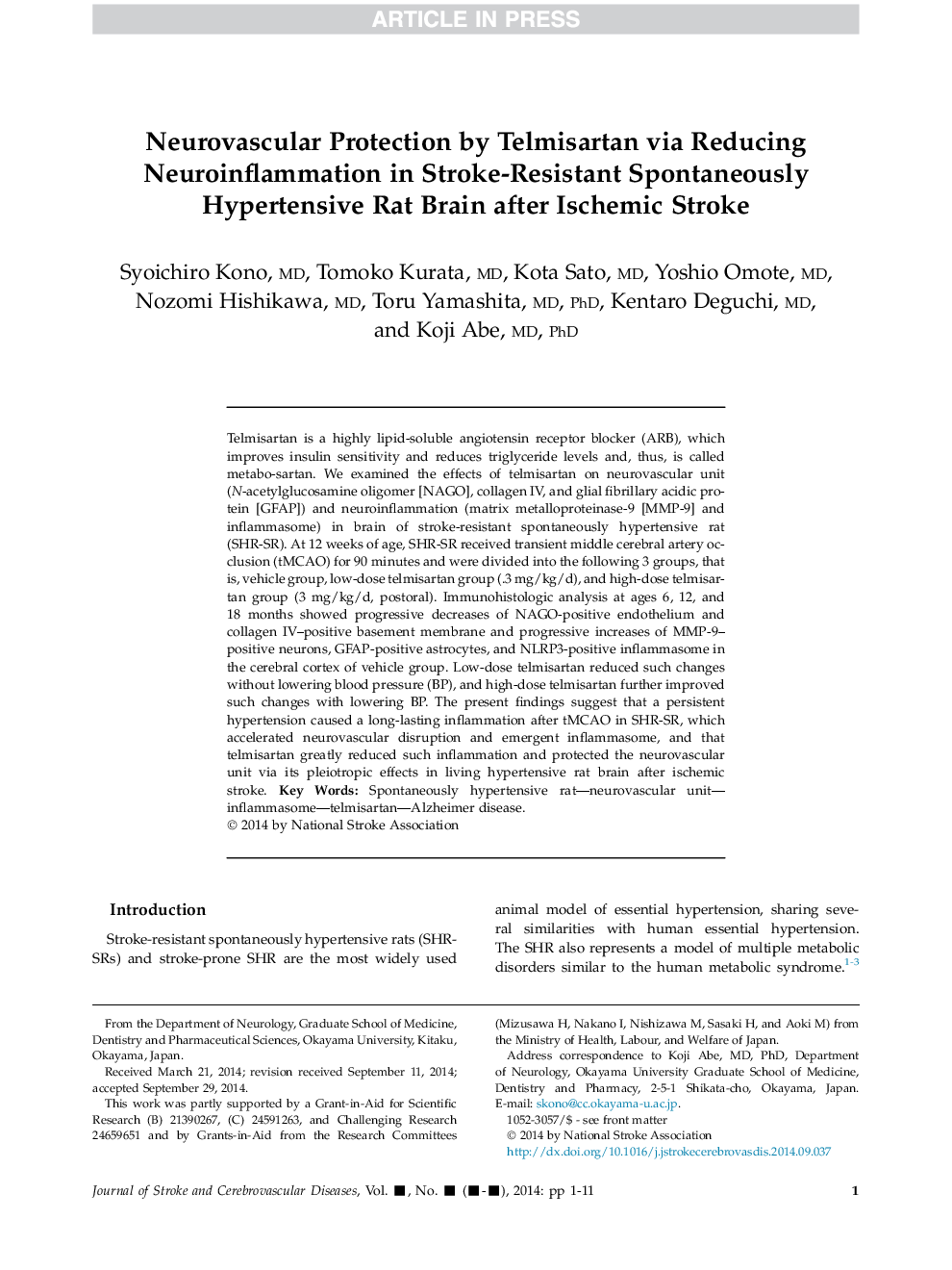| Article ID | Journal | Published Year | Pages | File Type |
|---|---|---|---|---|
| 5873093 | Journal of Stroke and Cerebrovascular Diseases | 2015 | 11 Pages |
Abstract
Telmisartan is a highly lipid-soluble angiotensin receptor blocker (ARB), which improves insulin sensitivity and reduces triglyceride levels and, thus, is called metabo-sartan. We examined the effects of telmisartan on neurovascular unit (N-acetylglucosamine oligomer [NAGO], collagen IV, and glial fibrillary acidic protein [GFAP]) and neuroinflammation (matrix metalloproteinase-9 [MMP-9] and inflammasome) in brain of stroke-resistant spontaneously hypertensive rat (SHR-SR). At 12Â weeks of age, SHR-SR received transient middle cerebral artery occlusion (tMCAO) for 90Â minutes and were divided into the following 3 groups, that is, vehicle group, low-dose telmisartan group (.3Â mg/kg/d), and high-dose telmisartan group (3Â mg/kg/d, postoral). Immunohistologic analysis at ages 6, 12, and 18Â months showed progressive decreases of NAGO-positive endothelium and collagen IV-positive basement membrane and progressive increases of MMP-9-positive neurons, GFAP-positive astrocytes, and NLRP3-positive inflammasome in the cerebral cortex of vehicle group. Low-dose telmisartan reduced such changes without lowering blood pressure (BP), and high-dose telmisartan further improved such changes with lowering BP. The present findings suggest that a persistent hypertension caused a long-lasting inflammation after tMCAO in SHR-SR, which accelerated neurovascular disruption and emergent inflammasome, and that telmisartan greatly reduced such inflammation and protected the neurovascular unit via its pleiotropic effects in living hypertensive rat brain after ischemic stroke.
Related Topics
Health Sciences
Medicine and Dentistry
Clinical Neurology
Authors
Syoichiro MD, Tomoko MD, Kota MD, Yoshio MD, Nozomi MD, Toru MD, PhD, Kentaro MD, Koji MD, PhD,
